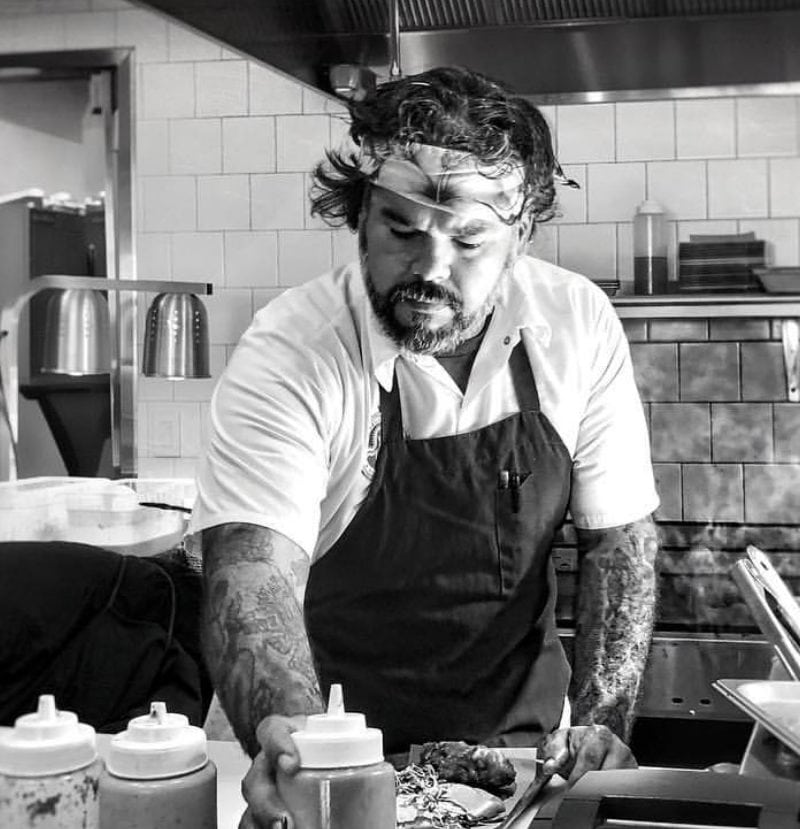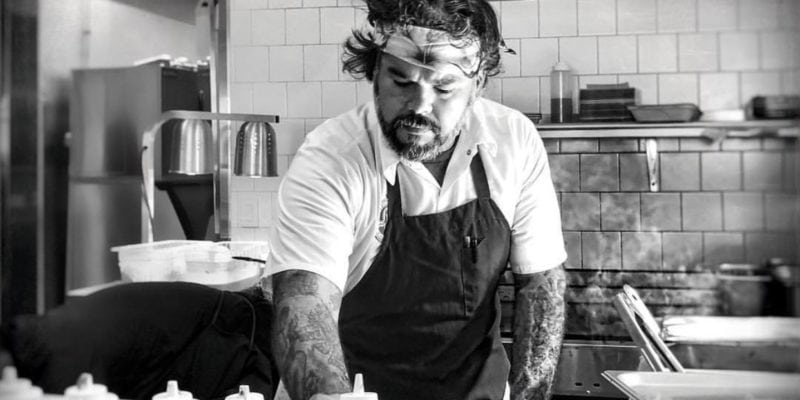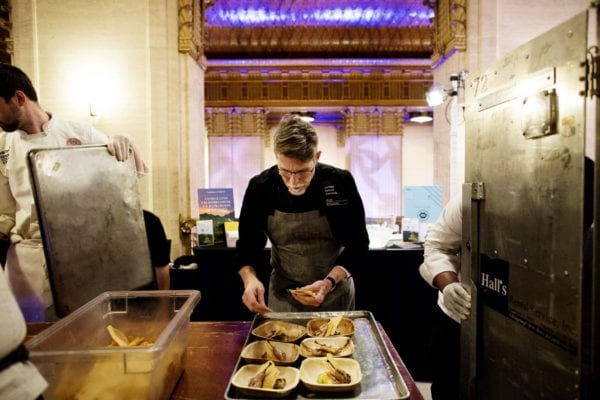Skift Take
The road from taco stand to truck to brick-and-mortar location is paved with lessons about hard work, creative thinking, and really good timing.
— Lesley Balla
If the food truck revolution began in 2008, when Roy Choi served his first Kogi taco, by 2012 the market was oversaturated. The streets of Los Angeles and many large cities around the country were teeming with four-wheeling food, with cooks at every level serving kalbi quesadillas, loaded hot dogs, wood-fired pizza, papusas, Filipino rice bowls and soft-serve swirls on late-night street corners, at festivals and in office parking lots just about any time of day. So for Wes Avila to start slinging tacos from a small cart outside of a coffee house in LA’s still relatively undiscovered Arts District neighborhood, it was a gamble.
Of course, it paid off. As a pedigreed chef making food with seasonal market ingredients, and executing with fine-dining technique mixed with LA. taquero soul, he garnered praise and acclaim by local taco aficionados, national food personalities and publications, and especially Jonathan Gold. Awards were won; there’s now a cookbook. And in July of this year, he opened a brick-and-mortar Guerrilla Tacos a few blocks from his original stand, retiring the original graffiti-stylized ride.
For Avila, diving into the unknown worked to his advantage, and he now has sights on making a successful go at a full-service restaurant and expanding his brand. He talks with us about lessons learned along the way, both about being a great chef and running a business, but also about the restaurant industry as a whole.
Skift Table: Why was 2012 the right time to do a taco stand?
Wes Avila: It was a changing time in the Arts District. I don’t think there was anywhere else I could’ve set up like that and the neighbors be cool with it. It was just the right time, the right environment. I had the right idea of making tasty food, but had it been 10 years earlier, no way. The cart gave me the ability to be flexible. Even with that kind of pressure, that situation made my food more unique, made me push further as a chef. It’s like trying to jump over your own shadow. It’s physically impossible, so I made it what it was.
Skift Table: Why did you move into a truck?
Avila: The truck came because I got shut down by the police. They said they had a phone call about open-fire cooking on the street, which wasn’t correct. We had a propane grill. I had no plan B; it was all very off the cuff. I knew it would be difficult to keep doing the stand, so I made some phone calls about getting a truck. I thought it took months to a year to get a truck, but that meant for custom builds. If you just wanted an existing truck, if you had the money, you could get one leased within days. So I got some money together and got the Guerrilla Taco truck.
Skift Table: Do you think your cuisine has influenced others?
Avila: Words like “alta California” and “new Angeleno” have been tossed around. You can call it whatever you want, I just call it my food. I never saw it as some kind of vision. I was just a dude making tacos. So many chefs that people talk about now, like Magnus Nilsson doing Nordic stuff, René Redzepi who is a genius, and Francis Mallmann cooking over open fire, they’re all cooking what they know from the countries they’re from. I never thought that it was unique to Los Angeles, I never thought of myself creating something in that way. You need to cook to your own strengths, your own terroir. Bottom line: Stay true to who you are, where you live, what you know.
Skift Table: What were your biggest hurdles going from truck to brick-and-mortar?
Avila: Number one is staffing. I lost key employees who were loyal on the truck, but the restaurant wasn’t for them. I gained great employees who wouldn’t have been good on the truck. Secondly, getting people to know that it’s more than just what we had on the truck. That we have a great bar program and full cocktail list. I made it my mission to not have cocktails over $10.
Pros is that we’re consistent, you can come anytime that we’re open. We have 90 percent of the things at all times. Cons, we aren’t present in Venice and Culver City. You’re not going to drive from Venice to Downtown to try tacos. As a business, it is cutting ourselves off, but it is exposing us to consistency.
Skift Table: So how are you tackling these issues?
Avila: For staffing, by bringing in more people than I have to. Over-hiring and letting people weed themselves out. You can tell pretty quickly if it’s the right fit, if an employee is going to be the best person they are when they come in. You can train someone to do the job, but you can’t train good habits like punctuality, respect and organization. For the bar and specials, we’re using social media. We’ll be doing partnerships with different brands to showcase their spirits and our bar.
Skift Table: Advice for anyone considering a truck today?
Avila: I can’t tell you how many times I’ve seen a truck flip from like sushi to Greek to hot chicken. It’s competitive and not as cheap as people think. I couldn’t have done a truck in 2012, which is why I did a stand. A truck has more highs and lows than even a restaurant does, but if you manage it right, find good drivers, have a good route, obey the laws, it could work. You have to put in the time and not focus so much on instant gratification or being Insta-famous, wishy-washy nomads. You have to pay your dues.
Skift Table: Why is now the right time for you to do a restaurant?
Avila: I don’t know if it’s the right time. I don’t have all the answers, but it’s the move that I need to do now, as I see the next evolution. I saw the truck as a stepping stone, I see the restaurant as a stepping stone. I’ve been doing tacos for six years, and although I enjoy it. I have a lot of things I want to explore as well.
Right now I’m playing cards close to my chest and waiting to see how things roll. I want to get this solid foundation first before I even think about another project. So many people stretch themselves and expand too quickly. I just want to get it dialed in, locked down, and then I’ll expand this vision. I’m steering the ship but still trying to build as I’m going along.






